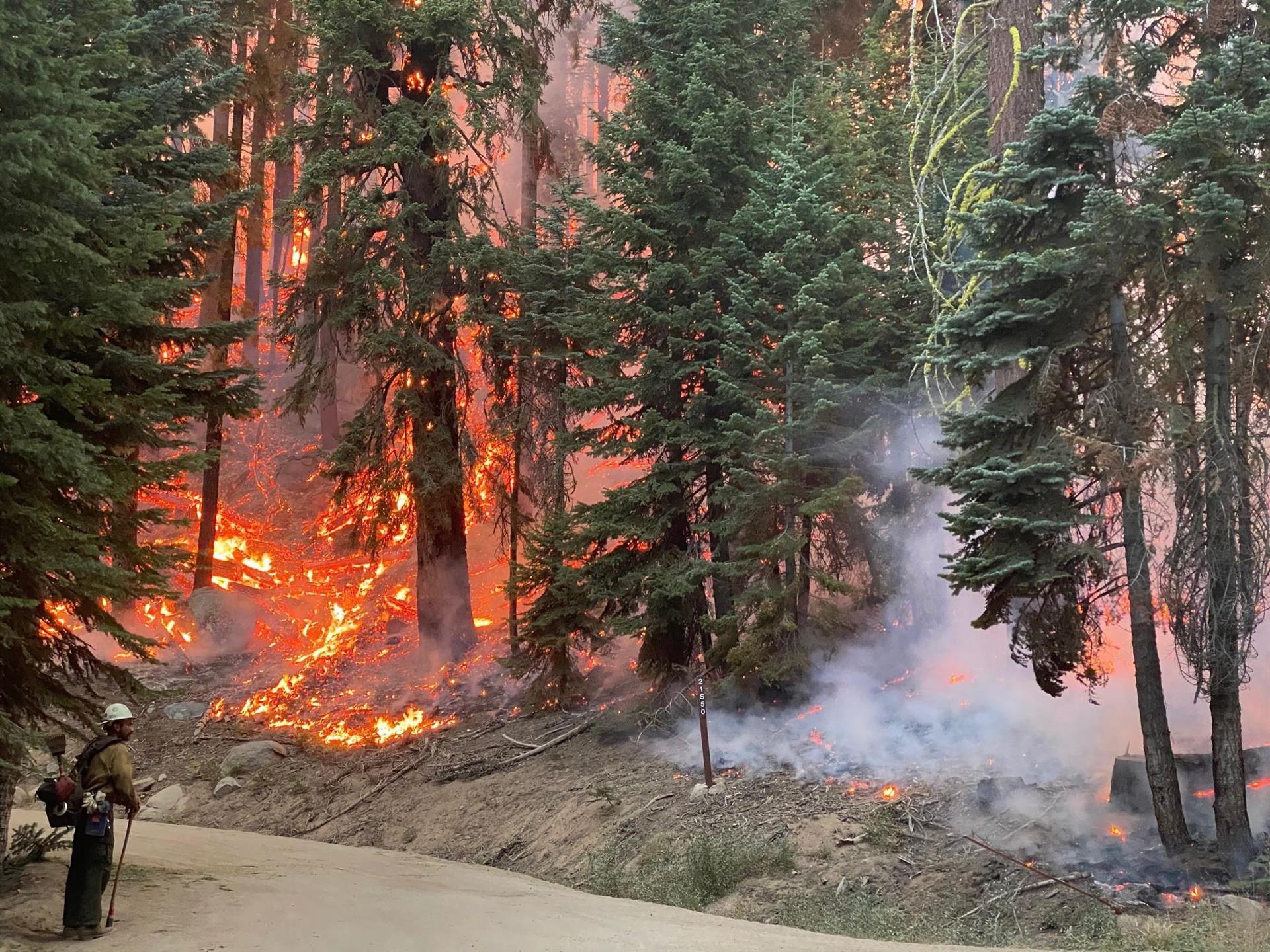Manuel Soberanes Cobo.- .- The persistent drought in the western United States, aggravated by the crisis global climate, threatens the existence of the ancient giant sequoias, while recent wildfires have totally or partially burned much of the groves of these majestic trees in the forests of California.
Redwoods are the largest plant organisms in the world, with heights that can exceed 100 meters and a diameter of around 10. The oldest known specimen is 3,200 years old, calculated by counting its growth rings.
Ironically, fire is a crucial part of redwood reproduction as the heat encourages the release of seeds from the cones that contain them, and the shoots take root in the gaps cleared by the flames.
However, “the problem arises when, due to the persistent drought, the prolongation of warm days and the reduction of winter days, with the consequent decrease in the snow mass in the mountains, the forests become easy pasture for the flames,” Javier Sierra, spokesperson for the environmental group Sierra Club, explained to Efe.
Between 2015 and 2021, increased wildfire intensity has devastated more than 85% of all redwood acreage in California’s Sierra Nevada, according to the National Park Service.
Currently, the Oak Fire, the largest of the five active fires in the state, burns near Yosemite National Park and represents a risk to the redwoods of this reserve.
The fire, which started on July 22, has devastated nearly 8,000 hectares and is one-third contained, according to state authorities.
California, like most of the country, has experienced weeks of exceptionally high temperatures, and in recent years the state has been the scene of increasingly widespread wildfires.
Given the threat, the US Forest Service announced last week an “emergency action” starting this summer and until 2023 on more than 5,000 hectares in 12 redwood groves in California.
The idea is to remove combustible materials and includes pruning or felling trees, application of chemical retardants, removal of surface organic matter from the base of the redwoods and controlled burning.
Of the 37 groves found in about 15,000 hectares of national forests in California, all but five have burned completely or partially in recent fires, and many monarchs – the largest sequoias – have died, according to the Forest Service.
The agency details that since 2015 wildfires have caused “significant devastation to redwood groves and destroyed almost a fifth of all giant sequoias in the last two years.”
Fossil fuels, the threat
The Sierra Club welcomed the federal initiative in a statement, but its spokesperson noted that it is very difficult to protect any forest in the world under the current circumstances of crisis climate, “especially in the American Southwest that suffers from chronic droughts.”
“It is crucially important to protect America’s ancient, old-growth forests and all of humanity that the most important tool in the fight against crisis climate: the drastic reduction of fossil fuel consumption, 45% between now and 2030 and completely by 2050,” Sierra explained.
He argued that protecting mature trees “is the best opportunity to recover ancient forests, of which in the United States we have already lost 95%.”
The expert asserted that federal agencies have to evolve and become carbon management agencies, “starting with the effective management of forests, such as redwoods, on federal lands.”
“Forest climate policy is the missing piece of efforts to address the crisis climate. Of the global emissions caused by humans since 1870, 26% are due to deforestation and degradation of the planet’s forests,” he emphasized.
Likewise, he indicated, “ancient and mature forests have the greatest potential to retain significant amounts of carbon and to recover the carbon that we have emitted in the last 200 years.”
The extraterrestrial ecstasy
In addition to the relevance of these trees in climate change mitigation, Sierra noted that “the rush of admiration, even ecstasy, that any nature lover receives upon seeing redwoods for the first time is difficult to describe.”
“These wonders look like extraterrestrials due to their astonishing volume and exquisite beauty. “Entering a redwood forest for many is equivalent to entering a natural cathedral that leaves the observer marked for life,” he said.
Unfortunately, he warned, redwood habitat has been significantly reduced, especially in the last 150 years. “The world, we, human beings, have the responsibility to preserve these wonders for future generations,” she said.
“An indigenous proverb warns us that we are not the owners of the world; we have only borrowed it from the next generation. “Depriving them of the redwoods would be an unforgivable sin,” he pointed out.

